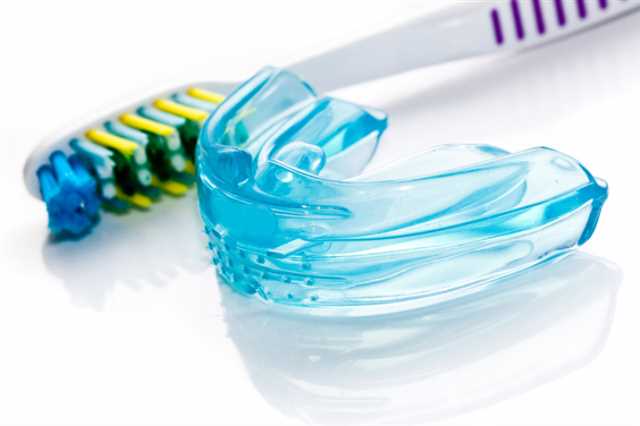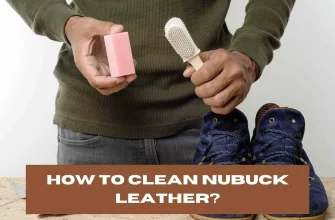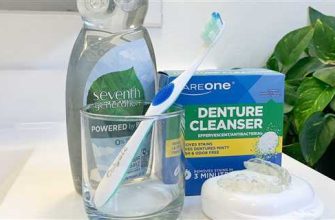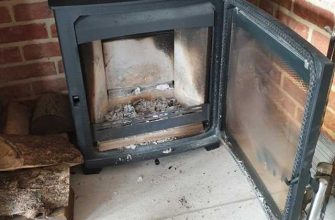
Cleaning your mouth guard is essential for maintaining its hygiene and prolonging its lifespan. A mouth guard, typically worn during sports activities or at night to prevent teeth grinding, can easily become a breeding ground for bacteria if not properly cleaned and cared for. In this article, we will discuss various methods and tips to keep your mouth guard clean and free from harmful bacteria.
One simple yet effective way to clean your mouth guard is by using warm water and a toothbrush. After every use, gently brush the surface of your mouth guard to remove any food particles or debris. Always use a nonabrasive toothpaste or soap when brushing, as harsh cleaners could damage the material of the guard. Rinse it thoroughly with water before placing it back in its case.
Another method to maintain the cleanliness of your mouth guard is by soaking it in a mouthwash or a mixture of hydrogen peroxide and water. Let it sit in the solution for a few minutes, or as recommended by the manufacturer, before rinsing it off and placing it back in its case. This will help kill any bacteria that could be hiding on the surface of the guard.
For a deep cleaning, you can mix baking soda with water to form a paste and gently brush it onto the mouth guard. Baking soda is a natural cleaner and can help remove stubborn stains and odors. After brushing, rinse the mouth guard thoroughly with water before using it again.
Always keep your mouth guard in its case when not in use to protect it from dust and bacteria. Additionally, avoid exposing it to extreme temperatures, as excessive heat or cold can warp the material. It is also important to replace your mouth guard every few months or as recommended by your dentist, as it can accumulate bacteria over time.
By following these tips and proper cleaning methods, you can ensure that your mouth guard stays clean, fresh, and free from harmful bacteria. Taking care of your mouth guard not only protects your dental health but also ensures optimal performance and longevity.
- Toothpaste
- Cleaning Your Mouthguard Is Easy
- 1. Rinse with water after each use
- 2. Brush your mouthguard daily
- 3. Soak in a cleaning solution
- 4. Proper storage
- 5. Replace your mouthguard regularly
- How to Clean Mouthguards
- Cleaning Mouthguards for Children:
- Deep Cleaning:
- Vinegar Solution:
- FAQs
- 1. Why should I clean my mouthguard?
- 2. How often should I clean my mouthguard?
- 3. What are some tips for cleaning a mouthguard?
- 4. Can I use mouthwash to clean my mouthguard?
- 5. What should I do if my mouthguard is damaged or shows signs of wear?
- Hydrogen peroxide and vinegar
- Hydrogen Peroxide
- Vinegar
- Soap and Water
- Place the mouth guard on a clean surface and let it air dry
- Video:
- My Night Time Routine | Dental Hygienist
Toothpaste
One of the most common and effective ways to clean mouthguards is by using toothpaste. Toothpaste not only helps remove bacteria and stains but also leaves your mouthguard smelling fresh.
Here’s how to clean your mouthguard with toothpaste:
- Start by rinsing your mouthguard with water to remove any loose debris.
- Apply a small amount of toothpaste to a soft toothbrush.
- Brush your mouthguard gently, making sure to cover all surfaces.
- Rinse the mouthguard thoroughly with water to remove any residual toothpaste.
- Alternatively, you can place your mouthguard in a clean container and cover it with toothpaste. Allow it to sit for a few minutes before brushing.
- After brushing, rinse the mouthguard again to remove any remaining toothpaste.
Tips for using toothpaste with mouthguards:
- Choose a toothpaste that does not contain abrasive particles, as they can damage the mouthguard.
- Avoid using toothpaste with whitening properties, as they may cause discoloration.
- Be sure to brush your teeth before cleaning your mouthguard with toothpaste to avoid transferring bacteria.
- For a deeper clean, consider using a nonabrasive mouthguard cleanser in combination with toothpaste.
- If you have children wearing mouthguards, supervise them while brushing to ensure they use the proper techniques.
FAQs:
Q: Why should I use toothpaste to clean my mouthguard?
A: Toothpaste helps remove bacteria and stains, leaving your mouthguard clean and fresh.
Q: Can I use baking soda or soap instead of toothpaste?
A: While baking soda and soap may be effective cleaners, they are not specifically designed for oral health and may not provide the same level of cleaning as toothpaste.
Q: How often should I clean my mouthguard with toothpaste?
A: It is recommended to clean your mouthguard with toothpaste after each use. However, at the very least, it should be cleaned weekly.
Remember, keeping your mouthguard clean is essential for your oral health and overall well-being. By properly cleaning and maintaining your mouthguard, you can enjoy a fresh and hygienic mouthguard every time you use it!
Cleaning Your Mouthguard Is Easy
Keeping your mouthguard clean is an essential part of maintaining good oral hygiene. By following proper cleaning methods, you can ensure that your mouthguard remains hygienic and free from bacteria.
1. Rinse with water after each use
- After removing your mouthguard, rinse it with water to remove any food particles or debris.
- Be sure to rinse it thoroughly, making sure there is no residue left on the mouthguard.
2. Brush your mouthguard daily
- Using a soft toothbrush and toothpaste, gently brush your mouthguard to remove any stubborn stains or buildup.
- Make sure to clean all surfaces, including the inside and outside of the mouthguard.
3. Soak in a cleaning solution
- Periodically, you should soak your mouthguard in a cleaning solution to eliminate bacteria and odors.
- A popular cleaning solution can be made by mixing equal parts of white vinegar and water.
- A mild soap solution or hydrogen peroxide can also be used for deep cleaning.
4. Proper storage
- When not in use, always store your mouthguard in a clean case to protect it from contamination.
- Avoid storing it in a damp or humid environment, as it can promote the growth of bacteria.
5. Replace your mouthguard regularly
- Mouthguards should be replaced every 6-12 months, depending on their condition.
- If your mouthguard becomes worn, cracked, or damaged, it’s time to get a new one.
By following these simple steps, you can easily clean and maintain your mouthguard, ensuring that it remains effective in protecting your teeth and gums during sports or other activities.
How to Clean Mouthguards
Keeping your mouthguard clean is essential for your oral health. Regular cleaning will not only maintain the mouthguard’s effectiveness but also prevent the growth of bacteria. Here are some tips on how to clean your mouthguard:
- Rinse: Rinse your mouthguard with water before and after each use to remove any debris.
- Brush: Use a toothbrush and toothpaste to gently brush the surface of your mouthguard. Be careful not to use abrasive cleansers or brushes that may damage the mouthguard.
- Soak: Every once in a while, soak your mouthguard in a mouthwash or a denture cleanser. This will help to disinfect the mouthguard and remove any stubborn stains.
- Air dry: After cleaning, let your mouthguard air dry in a clean and ventilated place. Avoid using a towel or tissue to dry it, as it may introduce bacteria.
- Keep it in a case: Always store your mouthguard in a clean and dry case when you’re not using it. This will protect it from damage and keep it away from bacteria.
- Replace it every few months: Mouthguards usually have a lifespan of 1 to 5 years, depending on their quality and how often they are used. Check with your dentist to know when it’s time to replace your mouthguard.
In addition to these general cleaning tips, here are some special considerations:
Cleaning Mouthguards for Children:
Children’s mouthguards require extra care and attention. Clean them daily and make sure to supervise their cleaning routine.
Deep Cleaning:
If your mouthguard feels dirty or has a bad smell, you can deep clean it by soaking it in a mixture of 1 part hydrogen peroxide and 1 part water for 30 minutes. After soaking, brush the mouthguard with a toothbrush and rinse it thoroughly.
Vinegar Solution:
An alternative cleaning solution is to soak the mouthguard in a mixture of equal parts water and white vinegar for 30 minutes. Rinse the mouthguard thoroughly and let it air dry.
By following these simple cleaning tips, you can ensure that your mouthguard stays clean, fresh, and effective in protecting your teeth.
FAQs
1. Why should I clean my mouthguard?
Proper cleaning and maintenance of your mouthguard is essential for maintaining good oral hygiene and preventing the buildup of bacteria and debris. Failure to clean your mouthguard regularly can lead to bad breath, tooth decay, and other dental issues.
2. How often should I clean my mouthguard?
You should clean your mouthguard after each use, especially if you wear it during sports activities. Additionally, it is recommended to deep clean your mouthguard at least once every few months to ensure it stays in good condition.
3. What are some tips for cleaning a mouthguard?
- Always rinse your mouthguard with water before and after use.
- Use a non-abrasive toothbrush and toothpaste or mild soap to brush the mouthguard gently.
- Consider using a denture cleaning solution or soaking your mouthguard in a mixture of hydrogen peroxide and water.
- For deep cleaning, you can also soak the mouthguard in a solution of white vinegar and water.
- Brushing your mouthguard with baking soda can help remove tough stains and odors.
- After cleaning, thoroughly rinse your mouthguard with water to remove any cleaning solution residue.
- Let your mouthguard air dry and store it in a clean and ventilated case.
4. Can I use mouthwash to clean my mouthguard?
Using mouthwash alone is not sufficient for cleaning a mouthguard, as it may not effectively remove bacteria and debris. However, you can use mouthwash as an additional step after cleaning your mouthguard with a toothbrush to help freshen it up.
5. What should I do if my mouthguard is damaged or shows signs of wear?
If your mouthguard is damaged or shows signs of wear, you should replace it immediately. A damaged mouthguard will not provide proper protection and may cause harm to your teeth and gums.
Hydrogen peroxide and vinegar
When it comes to cleaning mouthguards, some people may wonder if hydrogen peroxide and vinegar are effective options. Let’s take a closer look at using these substances to maintain a clean mouthguard.
Hydrogen Peroxide
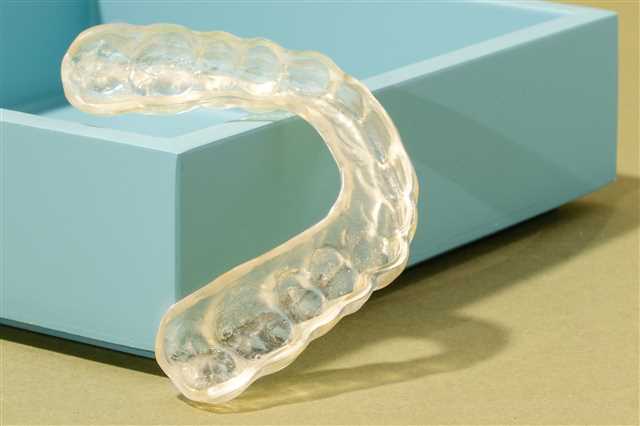
Hydrogen peroxide is a commonly used household disinfectant and cleaning agent. It can be used to clean your mouthguard, but it’s important to follow the proper steps.
- Start by rinsing your mouthguard with warm water to remove any loose debris.
- Prepare a solution of hydrogen peroxide and water. It is generally recommended to use a 3% hydrogen peroxide solution.
- Submerge your mouthguard in the hydrogen peroxide solution and let it soak for about 5 minutes. This will help disinfect the mouthguard.
- After soaking, rinse the mouthguard thoroughly with water to remove any remaining hydrogen peroxide.
- Finally, let the mouthguard air dry before placing it back in its case.
It’s important to note that hydrogen peroxide should not be used on a daily basis as it can wear down the surface of your mouthguard. It is best to use this method only once a week to deep clean your mouthguard.
Vinegar
Vinegar is another natural cleaning agent that can be used to clean your mouthguard.
- Start by rinsing your mouthguard with warm water to remove any loose debris.
- Prepare a solution of vinegar and water. A 50/50 mixture is generally recommended.
- Submerge your mouthguard in the vinegar solution and let it soak for about 15 minutes. The acidity of vinegar can help remove bacteria.
- After soaking, use a soft toothbrush to gently brush the surface of the mouthguard.
- Rinse the mouthguard thoroughly with water to remove any vinegar residue.
- Finally, let the mouthguard air dry before placing it back in its case.
Just like with hydrogen peroxide, it’s important not to use vinegar on a daily basis, as it can potentially damage the mouthguard over time. It is best to use this method once a week for deep cleaning.
In conclusion, both hydrogen peroxide and vinegar can be used to clean your mouthguard, but they should be used properly and not on a daily basis. It’s important to maintain proper mouthguard hygiene to ensure your mouthguard stays clean and in good condition for years to come.
Soap and Water
Soap and water is a simple and effective way to clean mouthguards. This method is easy to follow and does not require any additional cleaners or tools. Here’s how you can clean your mouthguard using soap and water:
-
Rinse immediately: After removing your mouthguard, rinse it with warm water to remove any debris or saliva.
-
Apply soap: Use a soft toothbrush and apply a small amount of mild soap or toothpaste to the bristles.
-
Gently brush the surface: Brush the mouthguard’s surface using gentle circular motions. Make sure to clean both the inside and outside of the guard.
-
Rinse thoroughly: Rinse the mouthguard with warm water to remove any soap or toothpaste residue. Make sure to rinse it properly so that no soap is left behind.
-
Dry before storing: After rinsing, dry the mouthguard with a clean towel or let it air dry completely before storing it in its case.
It is important to note that soap and water alone may not be sufficient for deep cleaning mouthguards. If you want to maintain its health and cleanliness, it is recommended to follow the steps of deep cleaning every 1-2 weeks or as advised by your dentist. Deep cleaning may involve using mouthwash, vinegar, baking soda, hydrogen peroxide, or specially designed mouthguard cleaners, followed by thorough rinsing and drying.
FAQs:
- Q: Is it safe to clean mouthguards with soap and water?
- A: Yes, cleaning your mouthguard with soap and water is generally safe. It is a gentle and effective method for daily cleaning.
- Q: Why is it important to clean a mouthguard properly?
- A: Properly cleaning a mouthguard helps maintain its health, remove bacteria or debris, and keep it fresh and odor-free.
- Q: Can I use toothpaste or baking soda for cleaning mouthguards?
- A: Yes, you can use toothpaste or baking soda as a cleaning agent. However, make sure to rinse it thoroughly to avoid any residue.
- Q: How often should I clean my mouthguard?
- A: It is recommended to clean your mouthguard daily, immediately after use. Additionally, deep cleaning should be done every 1-2 weeks or as advised by your dentist.
Place the mouth guard on a clean surface and let it air dry
After you have properly cleaned your mouth guard using the aforementioned methods, it is important to allow it to dry thoroughly before storing it. Placing the mouth guard on a clean surface and letting it air dry is an easy and effective way to ensure that it remains clean and free from bacteria.
Here are the steps on how to properly air dry your mouth guard:
- Gently remove the mouth guard from your mouth after use.
- Rinse it with warm water to remove any remaining saliva or food particles.
- Place the mouth guard on a clean surface, such as a countertop or towel.
- Allow the mouth guard to air dry completely. This usually takes around 10-15 minutes, depending on the air circulation in your environment.
- Once the mouth guard is dry, check for any signs of damage or wear. If you notice any cracks, tears, or changes in its shape, it may be time to replace the mouth guard.
- Store the mouth guard in a clean, dry case or container to protect it from dust and other contaminants.
By following these simple steps, you can ensure that your mouth guard remains clean, hygienic, and ready for use. Properly air drying your mouth guard after cleaning is essential for maintaining its longevity and preventing the growth of bacteria.
